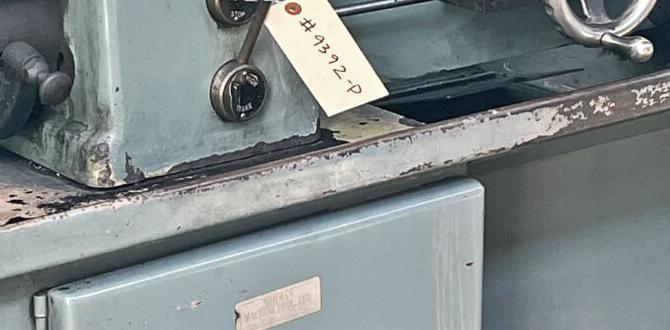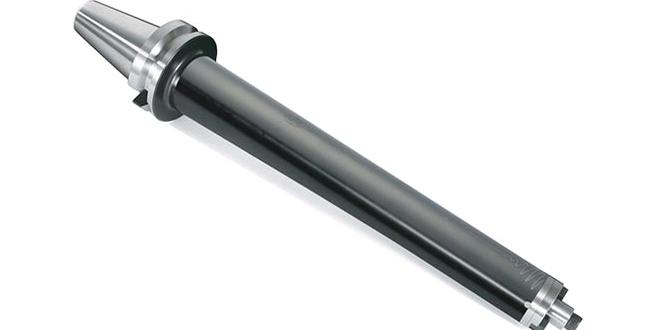For a smooth, mirror-like finish on Delrin using a 3/16 inch carbide end mill, choose a high-quality, sharp, two-flute tool. Optimize your milling machine’s speed and feed rates, use appropriate coolant, and employ light, finishing passes. Patience and precision are key to achieving that perfect Delrin polish.
Working with plastics like Delrin can sometimes feel a bit tricky, especially when you’re aiming for that super smooth, professional-looking finish. You might have plans for some intricate parts, and getting the surface just right is crucial. A common hiccup is achieving that flawless, almost mirror-like shine that signals a job well done. Fortunately, with the right tools and techniques, you can overcome this challenge. We’ll walk through exactly how to use a 3/16 inch carbide end mill to get a beautiful finish on Delrin, step by step. Get ready to make your projects shine!
Mastering the 3/16″ Carbide End Mill for a Delrin Mirror Finish
Achieving a high-quality finish on Delrin (also known as acetal or POM) with machining tools is a satisfying endeavor. Delrin is a popular choice for many DIY and professional projects due to its strength, low friction, and excellent machinability. However, it can be prone to melting or producing slightly rough surfaces if not handled correctly. This guide will focus on using a 3/16 inch carbide end mill, a versatile tool for many applications, to achieve an exceptional, often described as “mirror” finish. We’ll cover everything from tool selection and machine setup to the actual machining process and post-processing.
Why a 3/16 Inch Carbide End Mill for Delrin?
The 3/16 inch size is a sweet spot for many detailed projects. It’s small enough for intricate work but substantial enough to remove material efficiently. Carbide is the material of choice for machining plastics like Delrin because it stays sharp longer, can handle higher cutting speeds, and produces a cleaner cut compared to High-Speed Steel (HSS). For Delrin, specifically, a sharp carbide end mill is vital to prevent the plastic from melting and gumming up the flutes, which is a common cause of poor finishes.
Key Benefits of Using Carbide for Delrin:
- Durability: Carbide holds an edge much longer than HSS, meaning fewer tool changes and more consistent cuts.
- Heat Resistance: It withstands higher cutting temperatures generated when machining plastics, which helps prevent melting.
- Sharpness: Carbide can be manufactured with incredibly sharp edges, crucial for a clean cut in softer materials like Delrin.
- Surface Finish: A sharp carbide tool combined with proper parameters will produce a smoother surface than most other tool materials.
Choosing the Right 3/16″ Carbide End Mill
Not all 3/16 inch carbide end mills are created equal, especially when aiming for a mirror finish on Delrin. Several factors are important:
Number of Flutes
For plastics like Delrin, fewer flutes are generally better for finishing.
- 2-Flute End Mills: These are ideal for plastics. They offer more chip clearance, which is crucial for preventing Delrin from melting and clogging the flutes. They also tend to produce a smoother surface finish.
- 4-Flute End Mills: While excellent for metals, they can sometimes “drag” or “gum up” in plastics due to less chip space and more contact points.
For that “mirror finish,” a 2-flute end mill is your best bet.
End Mill Geometry
Look for end mills with specific geometry designed for plastics or non-ferrous materials.
- Bright Finish or Uncoated: While some coatings can be helpful, for Delrin, a simple, sharp uncoated (bright finish) carbide end mill is often best, as coatings can sometimes increase friction or heat.
- Sharp Edges: Ensure the cutting edges are exceptionally sharp. This is paramount for plastics.
- Upcut vs. Downcut vs. Straight Flute:
- Upcut: Flutes spiral upwards, pulling chips out of the hole. Good for general milling and plunging.
- Downcut: Flutes spiral downwards, pushing chips down. Excellent for achieving a smooth top surface finish by holding the material down, but can pack chips if not managed well. For a mirror finish on Delrin, a downcut or a specialized “chip breaker” flute can be beneficial if chip evacuation is managed.
- Straight Flute: Less common for plastics, typically used for slotting or specific operations.
For the ultimate mirror finish on the top surface of Delrin, a downcut end mill is often the preferred choice, as it helps hold the material down and compress the chips, leading to a smoother surface.
Shank Diameter
You’ll typically find 3/16 inch end mills with either a 3/16 inch shank or a 1/4 inch shank. A 1/4 inch shank provides more rigidity and vibration dampening, which can contribute to a better finish, but for most hobbyist milling machines, a 3/16 inch shank will suffice. Ensure your collet or tool holder matches the shank diameter.
Essential Machine Setup for Delrin Machining
Even with the right tool, improper machine setup can ruin your Delrin finish. Here’s what to focus on:
Spindle Speed (RPM)
Delrin can melt if too much heat is generated. You need enough RPM to keep the cutting edge moving efficiently, but not so much that it overheats the plastic.
- A good starting point for a 3/16 inch 2-flute carbide end mill in Delrin is between 10,000 and 18,000 RPM.
- Experimentation is key. Listen to the cut. If you hear squealing or see melting chips, the RPM might be too high, or the feed rate too slow.
Feed Rate (IPM or mm/min)
This determines how fast the material is being cut.
- For finishing: You want a relatively slow feed rate. This ensures the cutter is taking a controlled, fine chip. Too fast a feed rate can lead to rubbing and heat buildup, causing melting.
- A good starting point: For a 3/16 inch 2-flute carbide end mill on Delrin, try around 10-25 inches per minute (IPM). Again, this is a starting point and depends heavily on your machine’s rigidity and the depth of cut.
- Chip Load: A common metric is chip load, which is the thickness of the material removed by each cutting edge per revolution. For Delrin finishing with a 3/16″ 2-flute carbide end mill, aim for a chip load around 0.002″ – 0.005″.
Depth of Cut (DOC) and Stepover
These parameters significantly impact the surface finish.
- Depth of Cut (DOC): For finishing passes, you want very shallow depths. Typically, 0.010″ to 0.020″ is sufficient to clean up the surface without aggressively removing material or generating excessive heat.
- Stepover: This is the distance the tool moves sideways between passes. For a good surface finish, a small stepover is essential. A stepover of 0.010″ to 0.025″ will create smoother scallops on the surface. A smaller stepover means more passes but a visibly better finish.
Coolant and Lubrication
While Delrin doesn’t require intense cooling like some metals, a little help goes a long way.
- Flood Coolant: If your machine has it, a light stream of coolant (water-based is fine for plastics) can drastically help dissipate heat and clear chips.
- Mist Coolant: A mist system is excellent. It sprays a fine mist of coolant and air onto the cutting zone.
- Air Blast: Even a simple blast of compressed air can help keep the cutting area cool and blow away chips, preventing them from re-cutting.
- Lubricant Sticks/Sprays: For some plastics, a specialized cutting lubricant stick or spray designed for plastics can aid in preventing melting and improve finish. Ensure it’s compatible with Delrin.
Avoid using oil-based lubricants excessively, as they can sometimes react with plastics or create a slick surface that’s hard to glue or finish later.
Step-by-Step Guide to Achieving a Delrin Mirror Finish
Let’s put it all together into a practical, step-by-step process.
Step 1: Select Your Tool and Set Up Your Machine
- Choose your end mill: A new, sharp, 3/16 inch, 2-flute carbide end mill, preferably with a downcut configuration if available for surfacing.
- Secure your workpiece: Ensure the Delrin block is firmly clamped to your milling machine’s bed or vise. Use soft jaws if necessary to avoid marring the plastic.
- Install the end mill: Insert the end mill into your collet or tool holder, ensuring it’s seated properly.
- Set your zero point: Accurately set your X, Y, and Z zero points for your machining operation.
Step 2: Roughing Pass (If Necessary)
If your part requires significant material removal, perform a roughing pass first.
- Use a larger end mill (if applicable) or a higher DOC with your 3/16″ end mill.
- Set appropriate feed and speed parameters for roughing – these will be more aggressive than finishing.
- Prioritize efficient material removal. The goal is to get close to the final dimensions.
Step 3: Prepare for the Finishing Pass
This is where the magic happens for that mirror finish.
- Adjust Machine Settings:
- Spindle Speed (RPM): Set to a higher range, e.g., 12,000-18,000 RPM.
- Conventional vs. Climb Milling: For plastics, climb milling is generally preferred for finishing. In climb milling, the cutter rotates in the same direction as the workpiece is fed. This results in a shearing action that can produce a much smoother surface. However, it requires a machine with firm backlash control. If you don’t have a rigid machine with good backlash control, conventional milling might be safer to prevent chattering, but it can leave a rougher finish. Experiment carefully!
- Set Depth of Cut (DOC): Set a very shallow DOC, around 0.010″ to 0.020″.
- Set Stepover: Set a small stepover, between 0.010″ and 0.025″.
- Engage Coolant/Air Blast: Turn on your chosen cooling method.
Step 4: Execute the Finishing Pass(es)
- Start the spindle and bring it up to your target RPM.
- Carefully engage the feed into the Delrin.
- Make your pass(es): Monitor the cut closely. Listen for any unusual sounds. Watch the chip formation – they should be small, clean curls, not melted spaghetti.
- For a truly exceptional finish, consider making two finishing passes. The first pass removes material with a slightly larger DOC and stepover, and the second pass, with an even shallower DOC (e.g., 0.005″ to 0.010″) and possibly a very small stepover, refines the surface.
- Avoid sudden stops or starts mid-pass.
Step 5: Post-Machining
- Clean the workpiece: Gently brush or blow away any Delrin dust or chips.
- Inspect the finish: Examine the surface under good lighting for smoothness and uniformity.
- Optional: Hand Polishing: For an absolute mirror finish, you can sometimes achieve this with fine-grit sanding/polishing compounds applied with a soft cloth after machining. Start with very fine grits (e.g., 800, 1000, 2000 grit sandpaper) and work your way up, using a lubricant like water or isopropyl alcohol.
Troubleshooting Common Delrin Machining Issues
Even with the best intentions, you might run into problems. Here are a few common ones:
Problem: Melting and Gumming
- Cause: Too much heat. This can be from:
- Spindle speed too low.
- Feed rate too slow.
- Depth of cut too high.
- Insufficient or no coolant/air blast.
- Dull or chipped end mill.
- Solution:
- Increase spindle speed.
- Increase feed rate slightly (while maintaining adequate chip load).
- Reduce depth of cut significantly for finishing.
- Improve chip evacuation with air blast or coolant.
- Use a new, sharp end mill.
Problem: Rough Surface Finish (Scalloping)
- Cause:
- Stepover is too large.
- Tool runout or vibration.
- Dull tool.
- Incorrect milling direction (conventional vs. climb).
- Solution:
- Reduce the stepover.
- Ensure your collet and tool holder are clean and the end mill is properly seated for minimal runout (<0.001").
- Use a sharp end mill.
- Experiment with climb milling if your machine allows.
Problem: Chattering or Vibration
- Cause:
- Machine rigidity issues.
- Workpiece not securely clamped.
- End mill too long or flexible.
- Incorrect feed rate or spindle speed combination.
- Solution:
- Tighten clamping.
- Use the shortest possible tool stick-out.
- Ensure the end mill is sharp.
- Try adjusting feed and speed.
- Consider a more rigid end mill or a tool with a slight lead angle.
Recommended Parameters for a 3/16″ 2-Flute Carbide End Mill on Delrin (Approximate Starting Points)
It’s crucial to remember that these are starting points. Your actual machine, its rigidity, the specific grade of Delrin, and the exact end mill geometry will influence the optimal settings. Always start conservatively and adjust as needed.
| Operation | Spindle Speed (RPM) | Feed Rate (IPM) | Depth of Cut (DOC) (inches) | Stepover (%) | Chip Load (approx.) | Milling Type | Coolant/Lubrication |
|---|---|---|---|---|---|---|---|
| Finishing Pass | 10,000 – 18,000 | 10 – 25 | 0.010 – 0.030 | 10 – 25% (0.015″ – 0.047″ stepover for 3/16″ tool) | 0.002″ – 0.005″ | Climb Milling (preferred) or Conventional | Air blast, Mist coolant, or Flood coolant |
| Deep Roughing Pass (If needed) |
8,000 – 15,000 | 20 – 40 | 0.050 – 0.125 | 30 – 50% (0.056″ – 0.093″ stepover) | 0.005″ – 0.008″ | Conventional or Climb | Flood coolant recommended |
Note: Stepover is often specified as a percentage of the tool diameter. For a 3/16″ tool, 10% is 0.01875″, 25% is 0.046875″.
For more detailed understanding of machining parameters, the National Institute of Standards and Technology (NIST) provides valuable resources on machining data. While many of their studies focus on metals, the principles of chip formation, cutting forces, and thermal management are applicable.
Beyond Machining: Surface Finishing Delrin
Once you’ve achieved an excellent machined finish, you might want to take it a step further.
Sanding and Polishing
- Start with a relatively fine grit sandpaper (e.g., 400 or 600 grit) if needed for any minor imperfections.
- Progress through finer grits (800, 1000, 1200, 150




